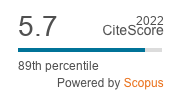The main use of black soldier fly larvae (Hermetia illucens) is currently as an animal feed ingredient. While the bacterial community of the larvae has been characterised repeatedly via sequencing, microbiological safety assessment based on culture-dependent techniques is still scarce. This study focused on the occurrence of the spore-forming foodborne pathogen Clostridium perfringens during rearing and consecutive processing of the larvae, based on observations in a single rearing facility. C. perfringens vegetative cells and spores were determined, in addition to total viable counts, total aerobic spore counts and intrinsic parameters including pH, water activity and moisture content. All samples were obtained from an industrial production plant. In a preliminary experiment, substrate ingredients and dried larvae were analysed, but the larvae were produced with a previous batch of the substrate mixture. A second, more detailed, experiment was performed where all samples were collected sequentially from the same production run (substrate ingredients, substrate mixture, starting larvae, harvested larvae, residue, dried larvae and stored dried larvae). In the two experiments, (presumptive) C. perfringens, as determined on tryptose sulphite cycloserine agar, was found at low numbers in the ingredients and in the second experiment it was also found in the substrate mixture. Over the two experiments, total C. perfringens counts (i.e. vegetative cells plus spores) ranged between 3.0±0.1 and <1.2±0.5 log cfu/g and C. perfringens spores ranged between 2.5±0.1 and <1.0±0.0 log cfu/g. Interestingly, vegetative cells and spores of C. perfringens were below the detection limit in all larvae samples. Therefore, it appears that at this production site and based on the samples investigated, the pathogen did not colonise the larvae. However, these results indicate that insect producers should monitor this pathogen among others, and install good hygiene practices to avoid contamination.
RESEARCH ARTICLE
Occurrence of Clostridium perfringens vegetative cells and spores throughout an industrial production process of black soldier fly larvae (Hermetia illucens)
N. Van Looveren Related information , D. Vandeweyer Related information
, D. Vandeweyer Related information
1KU Leuven, Department of Microbial and Molecular Systems (M2S), Lab4Food, Geel Campus, 2440 Geel, Belgium.
2KU Leuven, Leuven Food Science and Nutrition Research Centre (LFoRCe), Leuven, Belgium.
2KU Leuven, Leuven Food Science and Nutrition Research Centre (LFoRCe), Leuven, Belgium.
 , D. Vandeweyer Related information
, D. Vandeweyer Related information1KU Leuven, Department of Microbial and Molecular Systems (M2S), Lab4Food, Geel Campus, 2440 Geel, Belgium.
2KU Leuven, Leuven Food Science and Nutrition Research Centre (LFoRCe), Leuven, Belgium.
, J. van Schelt Related information2KU Leuven, Leuven Food Science and Nutrition Research Centre (LFoRCe), Leuven, Belgium.
3Bestico B.V., 2651 BE Berkel en Rodenrijs, the Netherlands.
, L. Van Campenhout Related information1KU Leuven, Department of Microbial and Molecular Systems (M2S), Lab4Food, Geel Campus, 2440 Geel, Belgium.
2KU Leuven, Leuven Food Science and Nutrition Research Centre (LFoRCe), Leuven, Belgium.
*Corresponding author: leen.
2KU Leuven, Leuven Food Science and Nutrition Research Centre (LFoRCe), Leuven, Belgium.
*Corresponding author: leen.
Journal of Insects as Food and Feed: 8
(4)- Pages: 399 - 407

Published Online: September 30, 2021
Abstract
2022 Journal Impact Factor
5.7
source: Journal Impact Factor 2023™ from Clarivate™

Institutional Offers
For institutional orders, please contact [email protected].
Purchase Options
-
G. Daş, M.M. Seyedalmoosavi, K. Schleifer, M. Mielenz and C.C. Metges
-
-
M. Barrett, S.Y. Chia, B. Fischer and J.K. Tomberlin
-
D.G.A.B. Oonincx and M.D. Finke
-
G. Bosch and K.S. Swanson
-
K.B. Barragan-Fonseca, M. Dicke and J.J.A. van Loon
-
A. van Huis
-
M. Tschirner and A. Simon
-
S. Kelemu, S. Niassy, B. Torto, K. Fiaboe, H. Affognon, H. Tonnang, N.K. Maniania and S. Ekesi
-
S. Diener, C. Zurbrügg and K. Tockner
Editor's Choice: Birgit Rumpold



